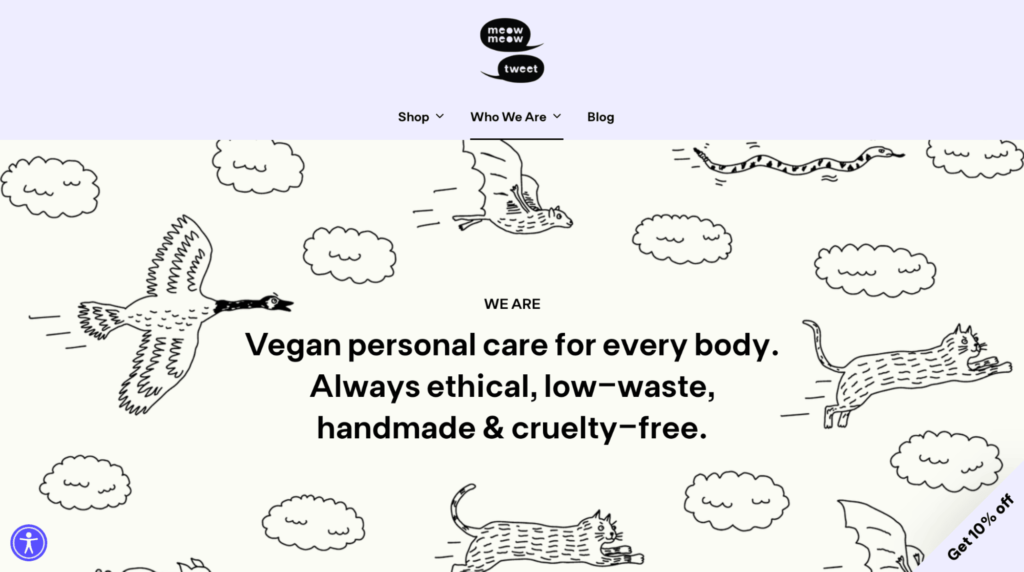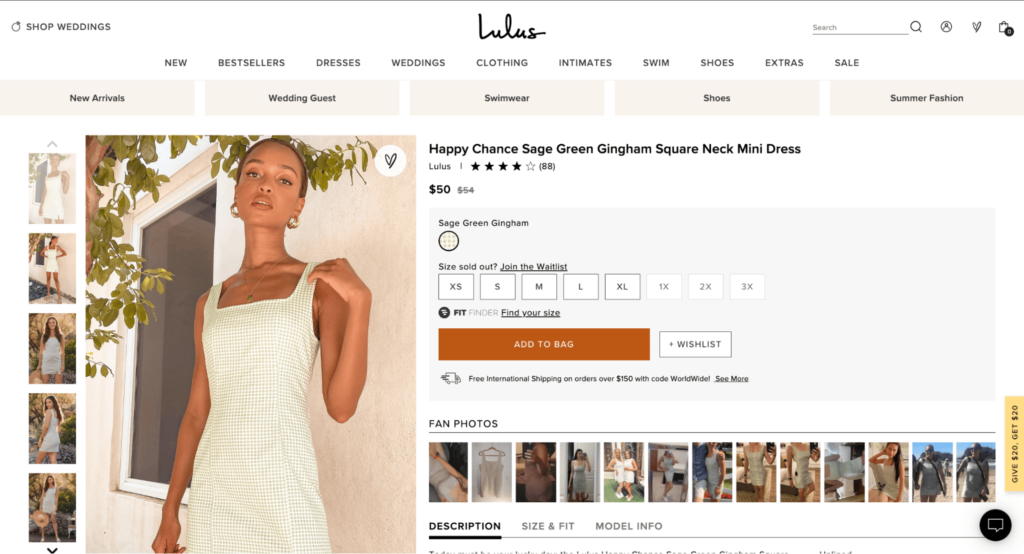Human beings are inherently visual creatures – in fact, 90% of the information our brains receive is visual. MIT neuroscientists even found that the human brain can only process images it has seen for as fast as 13 milliseconds.
This is why it’s vital for online stores to have visually striking and engaging content. Without good visual content, you can potentially lose a customer – literally – in a blink of an eye.
What shoppers see on your site is often the deciding factor in whether they stay there and keep exploring or lose interest and click away. That’s why having amazing content on your website that captures and holds your customers’ attention is absolutely crucial for your ecommerce store to succeed.
In this post, we share our top seven tips for attracting more people to your website and keeping them there through the clever use of compelling visual cues.
1. Don’t Underestimate the Power of Great Product Photos
What’s one thing the owners of today’s most successful ecommerce stores all have in common? They understand that they don’t just need great products, but also great product photography.
To help your product photos stand out on your own ecommerce website, amp up your shots with simple yet effective props. Choosing the right props and adding relevant background can enhance how your customer perceives the product.
It’s important to note that your props should complement, not complicate, your product. You would never want a prop to be overly dramatic to the point where it takes your customers’ focus away from what you’re selling.
Be mindful of your background as well. While you might decide that a plain white backdrop isn’t the most effective choice for your particular products, you still don’t want to have too many elements crowding the shot.
Your lighting, focus and angles also significantly impact the quality of your photos.
2. Be Original and Authentic
People crave genuine and original content. However, if your content is just like everyone else’s, your audience can get bored and eventually lose interest altogether. When you’re selling products online, hooking your customers in and keeping them interested is essential to your success now and in the future.
Your product photography will most likely come in the form of original photos you have taken. But do they look exactly like your competitors’ product photography?

Don’t forget about your written content. Visual content is best conveyed with good written copy. Think about your product descriptions, calls to action and blog posts.
Are the tone and style matched to your brand’s ethos? If not, don’t be afraid to express your individuality and uniqueness through your content. High-quality authentic content will leave a good impression on your website visitors and boost your domain authority.
Additionally, use audience feedback and insights to make sure you appeal to your potential customers’ interests.
3. Share the Stage
Did you know that 60% of consumers say content from friends or family influences their purchasing decisions, while just 23% say they find content from celebrities and influencers impactful?
If you’re just starting in the world of ecommerce and your purse strings are tight, why not leverage your first set of loyal customers to help boost your content marketing efforts? Ask them to take pictures of your products and share them as your brand ambassadors on social media.
Not only will this inject diversity and personality into your brand imagery, but customers will also appreciate seeing what the actual products look like when used or worn in real life.
If you go down this path, always give your customers credit by tagging them in your photos.
4. Get Social with Video
The power of video in content marketing is well-established. Just consider these statistics:
- 80% of people will watch a video, but only 20% will read text on a page.
- 55% of website visitors spend less than 15 seconds actively reading.
- 100 million hours of video are watched daily on Facebook – 85% of them with the sound off.
- People are 85% more likely to buy a product after viewing a product video.
Activewear brand, Gymshark, shares candid before and after shots of their customer’s transformation with a 10-second video.
Despite the popularity of videos, remember that one-dimensional “talking head” videos won’t get you the results you want, especially if you’re targeting Millennial and Gen Z shoppers.
Focus instead on creating short, fun, candid, and informal videos, such as behind-the-scenes clips or dancing challenges, that perform well on platforms like TikTok and Instagram Reels.
5. Invite Product Reviews and Feedback
Potential customers often compare products and scan through reviews before purchasing to feel confident that they’re making the right decision. This means product review articles and product comparisons are essential elements of an effective content strategy.
You can make it easy to get the “social seal of approval” from your regular shoppers by using a Shopify app like Product Reviews Addon to send out automated messages to key customers.

If people share your products on social media, reach out to them and request that they write a review on your website and add their photos. This is a great way to build up the strength of your brand and create a community around it.
6. Check Out Your Competition
If you notice that you’re losing ground to your competitors, it might not be because they’re outperforming you on price or quality. It could be that they’re more effective at making their sites visually appealing to their customers.
There’s no shame in scouring competitors’ product pages, blogs and social media presence and analyzing their formula for success. You can use what you learn during your investigative process as inspiration for honing your own content marketing strategy to replicate – and hopefully, even beat – their results.
An important point to mention here is that this certainly does not mean copying, as what other businesses do may not work for you or your audience.
Remember how earlier we spoke about creating original and authentic content? You can take small pieces of inspiration from a few brands, some of which don’t even have to be within your industry and combine them in your own personal way to create unique content that stands out.
7. Be Consistent
When launching a new ecommerce store, you need to start as you mean to go on.
This means understanding that while consumers like variety, they’re also creatures of habit. Therefore, being consistent with your visual content is just as important as the content itself.
You really want to avoid being perceived as inconsistent or unreliable, which is a sure-fire way to start losing customer loyalty.
Here are a few ways to be consistent with how you are presenting products on your ecommerce store:
- Product photo size: Your product images should look uniform in size and ratio. This will give your website a more professional look to make you stand out from the competition.
- Brand colors: Colors can fundamentally affect how customers perceive your brand. Choosing and sticking to a color scheme across all web pages is crucial to the customer experience. This includes all pages, text, icons, and navigation buttons.
- Font styles: A rule of thumb is to limit the font families to just two and stick to them throughout your site. When choosing your two fonts, ensure they complement each other based on character width.
Start Creating Amazing Visual Content Today!
Creating amazing visual content for your ecommerce site isn’t easy, but it sure is achievable – and you can get started today! By putting these seven simple strategies to work, you’ll soon have a content strategy that attracts and retains your customer’s attention now and as your site grows.








